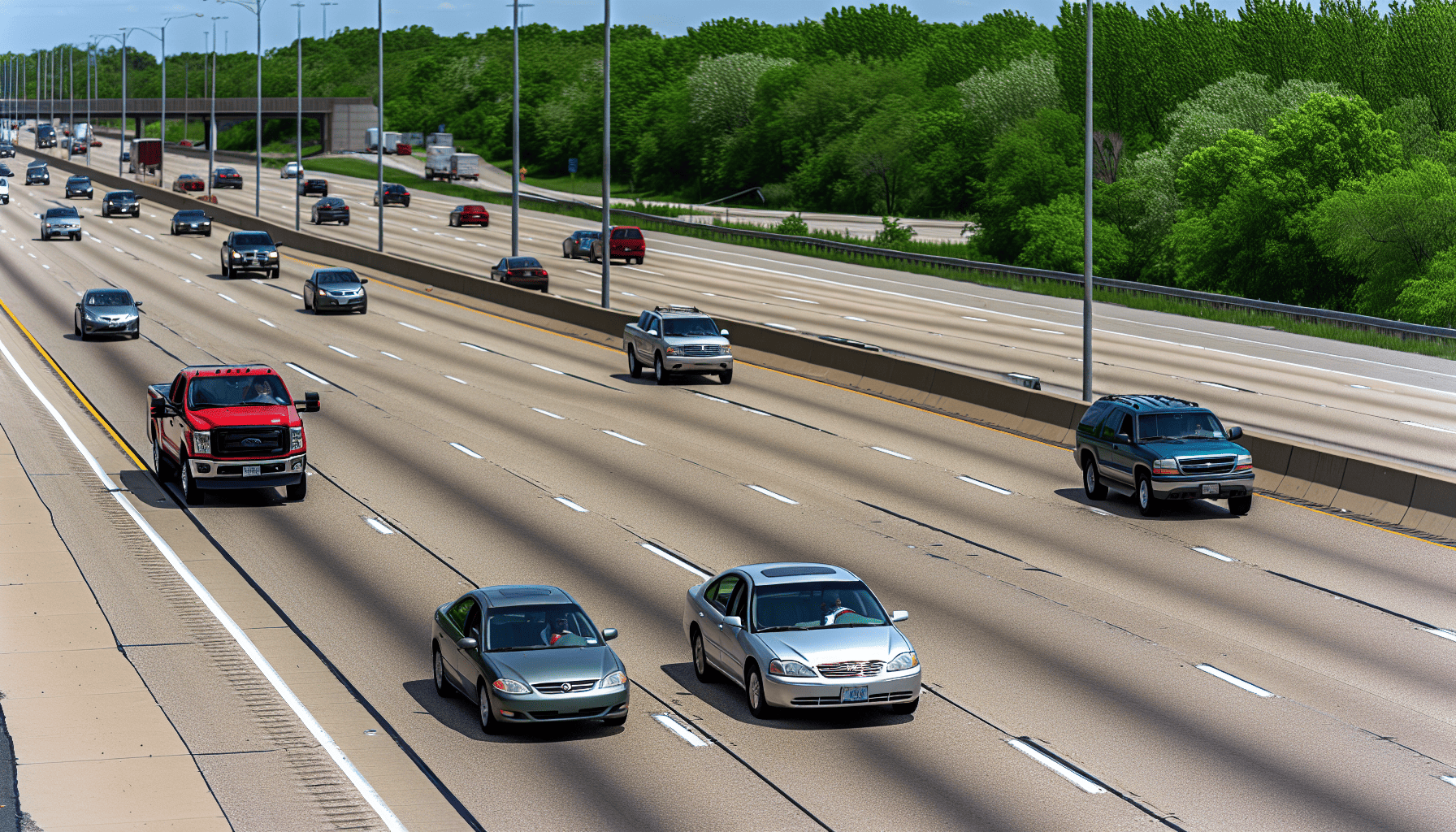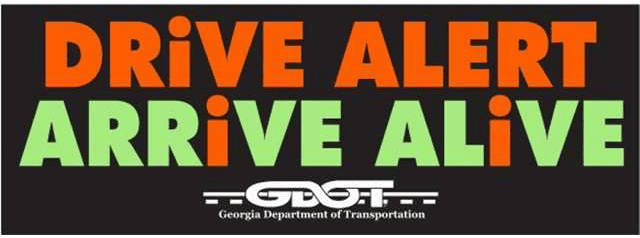As a driver in Atlanta, you need to be prepared for the unexpected – that means adopting safe driving practices for defensive drivers in Atlanta. In a city known for its heavy traffic and intricate roadways, knowing how to stay safe is essential. Cut through the chaos of Atlanta’s rush hour and navigate Spaghetti Junction with confidence. Our guide will walk you through actionable defensive driving tips that apply specifically to Atlanta’s unique driving environment, setting you up for a safer, more controlled journey every time you hit the road.
Key Takeaways
- Defensive driving in Atlanta involves awareness of traffic patterns, safety at intersections, and confident highway navigation, crucial for a safer commute and accident prevention.
- Enhancing defensive driving techniques is vital, focusing on anticipating other drivers’ actions, adjusting to weather conditions, and ensuring regular vehicle maintenance for road safety.
- The Georgia Department of Transportation’s initiatives like the ‘Drive Alert, Arrive Alive’ campaign and the Hands-Free Georgia Act, as well as defensive driving courses, contribute significantly to improving road safety in Atlanta.
Mastering Defensive Driving Skills in Atlanta

The art of defensive driving is a blend of awareness, preparation, and skill. It involves understanding traffic patterns, mastering the art of navigating intersections safely, and confidently cruising the highways of Metro Atlanta. When you’re behind the wheel, every decision matters. From the route you take to work to how you react to an aggressive driver, every choice can make the difference between a safe journey and a potential accident.
Understanding Atlanta’s unique traffic patterns, practicing intersection safety, and conquering the challenges of highway driving are paramount to becoming a safer driver. These defensive driving tips can make a difference in your daily commute, helping you stay safe and confident behind the wheel. Are you ready to elevate your defensive driving skills in Atlanta?
Understanding Traffic Patterns
Traffic patterns are like the pulse of a city, and understanding them is key to mastering defensive driving in Atlanta. Planning your route effectively and staying alert to potential dangers is easier when you recognize specific rush hour times using a traffic app. But when exactly are these peak hours? In Atlanta, the busiest traffic times are typically between 6 AM to 9 AM and again in the evening from 3:30 PM to as late as 7:30 PM. By avoiding these peak hours, you can become a safer driver and reduce the risk of accidents.
But it’s not just about when you drive, it’s also about where you drive. Some areas of Atlanta are notorious for traffic congestion. Here are some of the most commonly congested areas:
- I-285 East at I-85/Exit 33 in DeKalb County
- I-85 South at I-75/I-85/Exit 85 in Atlanta
- I-285 South at I-20/Exit 10 in Fulton County
- Spaghetti Junction, a major traffic bottleneck in the Atlanta area
A deep understanding of these patterns and effective use of the outlined tips will enable you to navigate Atlanta’s traffic with professional ease.
Defensive Driving Tips for Intersection Safety

Intersections are where paths cross, and it’s also where many accidents occur. Whether it’s a four-way stop or a complex intersection with traffic lights, it’s crucial to approach with caution. In Atlanta, you can become a champion of intersection safety by:
- Watching for pedestrians
- Approaching left turns with caution
- Avoiding speeding
- Maintaining a safe distance between cars
- Being prepared to stop at yellow lights
- Always obeying traffic laws.
But it’s not just about following rules, it’s also about awareness. Remember, pedestrians crossing a roadway at any point other than within a marked crosswalk should yield the right-of-way to all vehicles upon the roadway unless they have already entered the roadway. Prioritizing safety for everyone and avoiding distractions while driving can make a big difference. Taking control of your driving experience and making Atlanta’s intersections safer for everyone becomes possible once you consciously implement these practices and obey traffic laws.

Highway Driving
Highway driving brings its own set of challenges. The high rates of speed, ongoing construction, and occasional road rage can make it a daunting experience. But as a defensive driver, you have the opportunity to overcome these challenges and navigate Atlanta’s highways with ease. Major highways in Atlanta include:
- Interstates 20
- 75
- 85
- Georgia 400
with I-285 forming a beltway around the city. Notably, I-285 is considered one of the most dangerous highways in the nation, so extra caution is crucial.
But it’s not just about the challenges, it’s also about the opportunities for growth. By following these tips, you can become a master at defensive driving on Atlanta’s highways:
- Follow a pre-driving checklist
- Consistently wear your seatbelt
- Stay mindful of blind spots
- Be extra careful during merges
- Avoid the exit-only far-right lanes
It’s all about staying focused, being aware, and driving safely.
So buckle up, and let’s hit the road!

Enhancing Your Defensive Driving Techniques
Having mastered the basics of defensive driving in Atlanta, you’re now ready to take it up a notch. Enhancing your defensive driving techniques will prepare you better for the road and enable a more effective reaction to unexpected situations. This involves anticipating other drivers’ actions, adjusting to adverse weather conditions, and practicing proper vehicle maintenance.
Anticipating other drivers’ actions can be a game-changer in your defensive driving skills. A safer driving experience and avoidance of potential accidents come from observing other drivers for signs that indicate their next moves, adhering to speed limits, and maintaining alertness at all times. But what about when the weather isn’t in your favor?
Anticipating Other Drivers’ Actions
On Atlanta’s busy roads, every second counts. One of the most effective defensive driving techniques is anticipating other drivers’ actions. This means:
- Staying alert
- Being aware of your surroundings
- Looking ahead to anticipate hazards
- Regularly checking your mirrors
- Scanning the road for potential lane changes
These practices will help you avoid accidents and ensure a safe journey.
But what about when a driver is about to run a red light? Some warning signs include:
- Aggressive driving behaviors like speeding and tailgating
- Not coming to a complete stop before turning at a red light or ignoring stop signs
- Ignoring ‘No Turn on Red’ signs
- Following the car in front too closely through an intersection
By staying alert and driving defensively, you can avoid being caught off guard and ensure your safety on the road.
Adjusting to Adverse Weather Conditions
Adverse weather conditions can make driving more challenging. Whether it’s heavy rain, strong winds, or fog, it’s important to adjust your driving habits to ensure safety. In rainy conditions, which are common in Atlanta and can create some of the most dangerous driving conditions in the country, it is recommended to:
- Reduce your speed to minimize the risk of hydroplaning
- Increase the distance between your vehicle and the one in front of you
- Use your headlights to improve visibility
- Avoid sudden braking or acceleration
- Stay focused and avoid distractions
By following these tips, you can ensure a safer driving experience in rainy conditions.
But it’s not just about reducing speed. When driving in adverse weather conditions, increasing your following distance gives you more time to react in case of sudden stops. This is especially crucial when visibility is reduced and road conditions are poor, like during heavy rain or fog. By adapting your driving behavior to suit the conditions, you can navigate Atlanta’s roads safely, no matter the weather.
Practicing Proper Vehicle Maintenance
Your vehicle is your partner on the road, and like any good partnership, it requires care and attention. Regular vehicle maintenance is crucial for safe driving and preventing unexpected breakdowns. By ensuring your car operates at its best, you minimize the risk of breakdowns or malfunctions that could pose a threat on the road.
But how often should you be performing typical vehicle maintenance tasks for safe driving? To keep your vehicle in top condition, it’s crucial to follow the manufacturer’s recommended schedule for maintenance tasks. This often includes inspections, changes, or replacements at specific mileage intervals such as 30,000, 60,000, and 90,000 miles. Additionally, basic maintenance tasks such as fluid checks and changes may be recommended every 3 months or 3,000 miles, 6 months or 5,000 miles, and 12 months or 10,000 miles.
Georgia Department of Transportation (GDOT) Initiatives
The Georgia Department of Transportation (GDOT) plays a crucial role in promoting safe driving practices across the state. With initiatives like the “Drive Alert, Arrive Alive” campaign and the Hands-Free Georgia Act, GDOT is committed to making the roads safer for everyone in Georgia.
The “Drive Alert, Arrive Alive” campaign is a statewide safety campaign that inspires drivers to make simple yet crucial changes in their driving behavior to enhance road safety and prevent accidents. On the other hand, the Hands-Free Georgia Act aims to eliminate distracted driving by prohibiting drivers from holding a phone or using any body part to support it. Let’s delve deeper into these initiatives.

“Drive Alert, Arrive Alive” Campaign
The Drive Alert, Arrive Alive campaign by GDOT is about creating a safer and more responsible driving culture for everyone on the road. It empowers drivers with simple changes they can make in their driving behavior to:
- prevent crashes
- reduce accidents
- increase safety
- save lives.
The campaign, which aims to promote safer driving practices and work zone safety, focuses on reducing the number of traffic accidents and improving overall travel safety on roads in an effort to save lives. The campaign is a powerful partnership between the Georgia Department of Transportation (GDOT), the Governor’s Office of Highway Safety, and the National Safety Council, inspiring drivers to make small adjustments in their driving habits to enhance road safety.
Hands-Free Georgia Act
The Hands-Free Georgia Act is an essential piece of legislation that has had a significant impact on driving behavior and accident rates in Georgia. The Act, which was implemented in 2018, has led to a decline in distracted driving accidents. The percentage of traffic deaths caused by distracted drivers in the state dropped from 5.3% in 2017 to 3.1% in 2021, demonstrating the positive effect of the Act.
But what does the Act entail? The Hands-Free Georgia Act prohibits drivers from holding a phone or using any body part to support it while driving. However, it allows the use of voice-to-text for texting and making hands-free calls using headsets or earpieces. The Act also permits the use of dashboard or windshield-mounted GPS devices.
Adherence to the Hands-Free Georgia Act not only helps you avoid fines and points on your driver’s license but also contributes to safer roads in Georgia.
The Role of Defensive Driving Courses in Atlanta
Defensive driving courses are more than just learning the rules of the road. They’re about equipping you with the skills and knowledge to anticipate potential dangers and react appropriately. In Atlanta, these courses offer valuable education on safe driving practices, with potential benefits such as insurance discounts from your insurance company and points reduction.
So, where can you take these courses, and what do they offer? Let’s dive into the specifics of defensive driving courses in Atlanta and how they can help enhance your driving skills.

Course Offerings and Locations
Defensive driving courses can be a powerful tool in improving your driving skills and boosting your safety on the road. These courses cover a range of topics, including:
- Understanding traffic laws
- Anticipating other drivers’ actions
- Managing distractions
- Handling adverse weather conditions
- Avoiding aggressive driving behaviors
Some reputable defensive driving schools include 1 ACT Driving Schools and Atlanta Area Driving & DUI School. Taking a defensive driving course can help you become a more confident and skilled driver.
But one of the great things about these courses is the flexibility they offer. Whether you prefer an in-person class at locations like A-1 Driving Schools or an online course offered by DriveSafeToday or Georgia Driving School, there’s an option that fits your schedule. And the best part? The average cost of a defensive driving course in Atlanta is just $95, a small price to pay for the peace of mind and improved skills you’ll gain.

Insurance Discounts and Points Reduction
A defensive driving course offers more than just improved driving skills. It can also lead to insurance discounts and points reduction on your driving record upon completion. By completing a defensive driving course, you can unlock an exciting insurance discount ranging from 5% to 20%.
And it’s not just about the discounts. In Georgia, completing a defensive driving course offers the following benefits:
- Allows you to remove up to 7 points from your driving record, which you can do once every five years
- Can lead to lower insurance premiums
- Helps maintain a cleaner driving record
This makes it a worthy investment for any driver in Atlanta.
Sharing the Road with Others
Driving isn’t just about you and your vehicle – it’s about sharing the road responsibly with other road users, including other motorists. Whether it’s a motorcycle whizzing by or a pedestrian crossing the street, being mindful of others on the road is a crucial aspect of defensive driving.
This section will focus on the safe sharing of the road with motorcycles, bicycles, and pedestrians.
Motorcycle Safety
Motorcycles can sometimes be hard to spot on the road due to their smaller size compared to other vehicles, which means drivers need to be extra vigilant. Ensuring the safety of everyone on the road requires giving motorcyclists ample space, regularly checking mirrors and blind spots, and being aware of their maneuverability.
But sharing the road with motorcycles isn’t just about being cautious – it’s also about understanding the rules. In Georgia, the law requires drivers to safely share the roads with motorcyclists. It’s illegal for motorcycles to lane split in Georgia, a practice where motorcycles drive between lanes of slow-moving or stopped traffic. By understanding and following these rules, we can all contribute to a safer road environment for everyone.
Bicycle and Pedestrian Awareness
Just like motorcycles, bicycles and pedestrians also share the road with vehicles. In Atlanta, bicycles are considered vehicles and are subject to the same traffic laws. They are required to ride in the same direction as traffic when in a bicycle lane, and if a bicycle path is exclusively for bicycles and not pedestrians, cyclists may be required to use it.
Drivers can play a crucial role in ensuring the safety of bicycles and pedestrians on the road. Here are some ways drivers can contribute to a safer road environment for everyone:
- Leave at least three feet of space when passing a bicycle
- Be aware of cyclists when making turns or changing lanes
- Yield to pedestrians at crosswalks and intersections
- Follow all traffic laws and signals

Summary
Navigating Atlanta’s roads can be challenging, but with the right knowledge and mindset, you can drive with confidence. From mastering traffic patterns and intersection safety to enhancing your defensive driving techniques and sharing the road responsibly with others, every aspect plays a crucial role in becoming a safer driver. Remember, defensive driving isn’t just about following the rules – it’s about being proactive, staying alert, and making smart decisions on the road. Let’s make Atlanta’s roads safer, one driver at a time.
Frequently Asked Questions
What are 5 defensive driving strategies?
Adopt defensive driving strategies like knowing your route, anticipating road conditions, braking early, maintaining a safe distance, and expecting the unexpected. Always prioritize safety first and be aware of your surroundings while driving. Avoid depending on other drivers, maintain a safe following distance, and have an escape route in mind to reduce risks on the road. Cut out distractions and keep your speed down to ensure a safe and enjoyable drive.
How many times can you take defensive driving in GA?
You can take the 6 hour defensive driving class once every 5 years in Georgia to reduce up to 7 points from your driving record. This can help in maintaining a clean driving record and potentially lowering insurance rates.
What is the most basic principle of defensive driving?
The most basic principle of defensive driving is to aim high, which means staying alert and focused to avoid collisions and warn other drivers of potential traffic hazards. Keep your gaze up to maintain a clear view of the road.
What are the three steps in a defensive driving strategy?
In a defensive driving strategy, the three key elements to focus on are: Prepare, Anticipate, and Defend. These steps help ensure safe navigation through any driving environment.
What are some important defensive driving skills to master in Atlanta?
Mastering defensive driving skills in Atlanta involves understanding traffic patterns, practicing intersection safety, and gaining confidence in highway driving. Drive safely!
